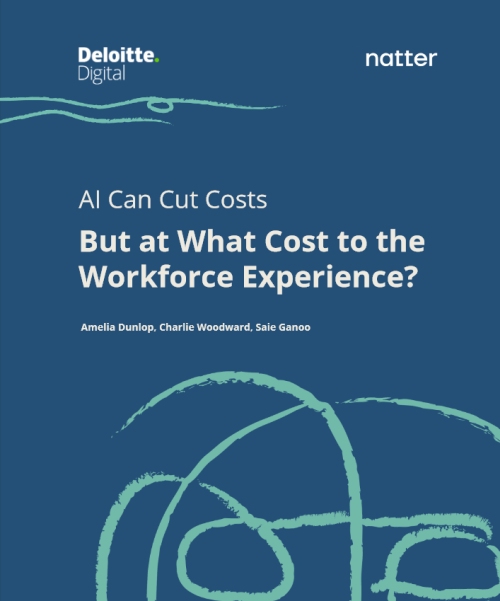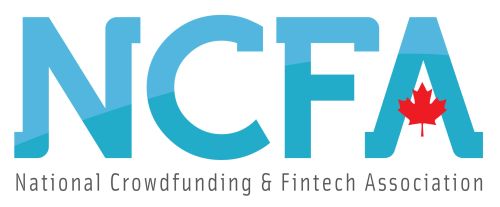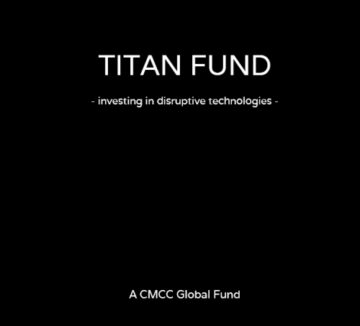Survey | April 15, 2025

 Image: Deloitte Digital and Natter report cover
Image: Deloitte Digital and Natter report coverThe Dichotomy of AI in the Workplace and Strategies to Manage it’s Impact
According to a recent Deloitte Digital and Natter report called “AI can cut costs but at what cost to the workforce experience“, while AI promises substantial improvements in efficiency and productivity, it also raises significant concerns regarding job displacement, privacy, and the dilution of human interaction. This article delves into the cost-benefit analysis of AI in professional settings, guided by insights from Deloitte’s comprehensive survey, and discusses effective strategies to manage its impact on the workforce.
The report outlines a nuanced debate on the workforce implications of AI across four key areas, each representing a tension between potential benefits and risks:
1. Efficiency vs. Inclusivity
AI can significantly enhance efficiency by automating routine tasks, which can reduce the time and effort employees spend on mundane activities, potentially freeing them up for more complex and rewarding tasks. 69% of 1:1 Natter conversations cited improved efficiency in routine tasks as the top hope for AI in the workplace.
See: When Tech and Humanity Clash: AI Dilemma at SXSW
There is a concern that the focus on efficiency might overlook the need for inclusivity. The automation of tasks through AI can inadvertently embed and scale biases if not carefully managed, particularly in algorithms that drive decision-making processes. This could lead to a workplace that disadvantages certain groups. Nearly a third of conversations expressed concern for the bias and inclusion challenges of AI, indicating that excitement for AI’s benefits is tempered by fears of embedding systemic biases.
“AI will be seen as a potential shortcut to cut costs in process-oriented roles – typically entry-level jobs.” — Workforce experience leader
2. Creative Inspiration vs. Diligence
AI is seen as a tool that can spark creativity among employees by providing new ideas and perspectives, thus enhancing the creative process and potentially leading to innovative outcomes. Over 69% of leaders stated they believe that AI will improve employee creativity to some degree.
See: The Rise and Implications of a New AI Software Workforce
The risk here is that overreliance on AI could undermine the diligence required in work processes. If AI tools are used without adequate human oversight, the accuracy and thoroughness of work may decline, potentially affecting the overall quality of outputs. 42% of conversations cited concern for a decline in the quality of work, reflecting fears that AI may lead to a lack of thoroughness and accuracy.
“Getting every single employee to think of AI as an augmentation tool and have them be as creative and thoughtful in ways that they can use it in their day-to-day work to supplement and enhance their productivity is something we’re pushing.” — Workforce experience leader
3. Personalization vs. Data Privacy
AI’s ability to analyze large datasets can lead to better personalization in managing employee needs and improving the employee experience. This can make communications and HR decisions more relevant to individual employees.
Enhanced personalization requires access to detailed personal data, which raises significant privacy concerns. There’s a risk that the data could be misused or inadequately protected, leading to breaches of privacy and loss of trust among employees. 56% of conversations cited concern about ethical use of AI for data security and privacy.
See: lack the depth and empathy of human interactions, which are essential for building strong, trusting relationships. 41% of leaders are concerned that AI will degrade the quality of human connections, potentially making interactions less personal and more transactional.
“Does it really give you back time, or does it create more capacity to do more?” — Workforce experience leader

 Image: Freepik kues1
Image: Freepik kues1
Strategies for Managing AI’s Impact
“Does it really give you back time, or does it create more capacity to do more?” — Workforce experience leader

 Image: Freepik kues1
Image: Freepik kues1To harness the benefits of AI while addressing its potential costs, organizations can adopt several strategic approaches:
- Develop guidelines and standards for ethical AI use, ensuring that AI systems are designed and operated in a way that respects privacy and prevents bias. For example, AI models should be regularly audited for fairness and accuracy.
- Design AI systems that complement human skills and enhance job satisfaction. Organizations should use AI as a tool to support employees, not replace them, fostering an environment where technology and human expertise coexist.
See: CMA Flags Big Tech’s Tightening Hold on AI Markets
- Clearly communicate with employees about how AI is used within the organization and its impact on their roles. This includes training sessions and open forums to discuss AI projects, addressing any concerns and gathering feedback.
- As AI changes job roles, companies must provide training and reskilling opportunities to help employees transition to new roles or adapt to new technologies, ensuring that no one is left behind as the workplace evolves.
- Adopt robust data governance practices to protect sensitive information and maintain trust with employees and customers. This involves securing AI data inputs and outputs, and ensuring compliance with relevant data protection laws.
- Involve diverse teams in AI development to help reduce unconscious bias in AI systems. Diversity in development teams can help anticipate and mitigate potential bias in AI applications.
Conclusion
Great to see a report that looks at AI from a human-centric lens. AI presents both opportunities and challenges for the workplace. By focusing on strategies that promote ethical use, support workforce development, and enhance employee engagement, organizations can ensure that the integration of AI contributes positively to their operational goals and workforce experience.

 The National Crowdfunding & Fintech Association (NCFA Canada) is a financial innovation ecosystem that provides education, market intelligence, industry stewardship, networking and funding opportunities and services to thousands of community members and works closely with industry, government, partners and affiliates to create a vibrant and innovative fintech and funding industry in Canada. Decentralized and distributed, NCFA is engaged with global stakeholders and helps incubate projects and investment in fintech, alternative finance, crowdfunding, peer-to-peer finance, payments, digital assets and tokens, artificial intelligence, blockchain, cryptocurrency, regtech, and insurtech sectors. Join Canada’s Fintech & Funding Community today FREE! Or become a contributing member and get perks. For more information, please visit: www.ncfacanada.org
The National Crowdfunding & Fintech Association (NCFA Canada) is a financial innovation ecosystem that provides education, market intelligence, industry stewardship, networking and funding opportunities and services to thousands of community members and works closely with industry, government, partners and affiliates to create a vibrant and innovative fintech and funding industry in Canada. Decentralized and distributed, NCFA is engaged with global stakeholders and helps incubate projects and investment in fintech, alternative finance, crowdfunding, peer-to-peer finance, payments, digital assets and tokens, artificial intelligence, blockchain, cryptocurrency, regtech, and insurtech sectors. Join Canada’s Fintech & Funding Community today FREE! Or become a contributing member and get perks. For more information, please visit: www.ncfacanada.org
Related Posts
- SEO Powered Content & PR Distribution. Get Amplified Today.
- PlatoData.Network Vertical Generative Ai. Empower Yourself. Access Here.
- PlatoAiStream. Web3 Intelligence. Knowledge Amplified. Access Here.
- PlatoESG. Carbon, CleanTech, Energy, Environment, Solar, Waste Management. Access Here.
- PlatoHealth. Biotech and Clinical Trials Intelligence. Access Here.
- Source: https://ncfacanada.org/double-edge-sword-of-ais-impact-on-workforce-experience/
- :has
- :is
- :not
- :where
- $UP
- 1
- 15%
- 150
- 2018
- 2024
- 250
- 32
- 500
- 62
- a
- ability
- About
- access
- accuracy
- across
- actions
- activities
- adapt
- addressing
- adequate
- administrative
- adopt
- affecting
- affiliates
- AI
- AI Data
- AI models
- AI systems
- algorithms
- also
- alternative
- alternative finance
- among
- an
- analysis
- analyze
- and
- anticipate
- any
- applications
- approaches
- April
- ARE
- areas
- article
- artificial
- artificial intelligence
- AS
- Assets
- At
- audited
- automate
- automating
- Automation
- back
- BE
- become
- behind
- believe
- benefits
- Better
- between
- bias
- biases
- Big
- blockchain
- both
- build
- Building
- but
- by
- cache
- called
- CAN
- Canada
- Capacity
- carefully
- certain
- challenges
- Changes
- cited
- Clash
- closely
- CMA
- coexist
- comments
- communicate
- Communications
- community
- Companies
- Complement
- complex
- compliance
- comprehensive
- Concern
- concerned
- Concerns
- Connections
- contributes
- conversations
- Cost
- Costs
- could
- create
- Creative
- creativity
- Crowdfunding
- cryptocurrency
- Customers
- Cut
- cut costs
- data
- data analysis
- data security
- datasets
- day-to-day
- debate
- decentralized
- Decision Making
- decisions
- Decline
- Degree
- deloitte
- delves
- depth
- designed
- detailed
- Development
- development teams
- digital
- Digital Assets
- dilemma
- diligence
- dilution
- discuss
- discusses
- displacement
- distributed
- Diversity
- do
- does
- drive
- each
- ecosystem
- Education
- Effective
- efficiency
- effort
- embed
- embedding
- Empathy
- Employee
- employees
- engage
- engaged
- engagement
- enhance
- enhancing
- ensure
- ensuring
- entry-level
- Environment
- essential
- Ether (ETH)
- ethical
- Every
- evolves
- example
- Excitement
- experience
- expertise
- expressed
- fairness
- fears
- feedback
- finance
- financial
- financial innovation
- fintech
- flags
- Focus
- focusing
- For
- forums
- fostering
- four
- freeing
- from
- funding
- funding opportunities
- gathering
- get
- getting
- Give
- Global
- Goals
- governance
- Government
- Group’s
- guided
- guidelines
- harness
- Have
- help
- helps
- here
- High
- hold
- hope
- How
- hr
- http
- HTTPS
- human
- Humanity
- ideas
- if
- image
- Impact
- implications
- improve
- improved
- improvements
- improving
- in
- inadvertently
- includes
- inclusion
- indicating
- individual
- industry
- information
- Innovation
- innovative
- inputs
- insights
- Inspiration
- Insurtech
- integration
- Intelligence
- intensifying
- interaction
- interactions
- into
- investment
- involves
- IT
- ITS
- Jan
- Job
- Jobs
- jpg
- Key
- Key Areas
- Lack
- large
- lead
- leaders
- leading
- left
- Lens
- less
- LOOKS
- loss
- maintain
- make
- Making
- manage
- managed
- managing
- Market
- Markets
- max-width
- May..
- meaningful
- member
- Members
- might
- Mitigate
- models
- more
- must
- nearly
- Need
- needs
- networking
- New
- New technologies
- no
- nuanced
- of
- on
- ONE
- open
- OpenAI
- operated
- operational
- opportunities
- or
- organizations
- outlines
- outputs
- over
- overall
- Oversight
- particularly
- partners
- payments
- peer to peer
- perks
- personal
- personal data
- personalization
- perspectives
- plato
- Plato Data Intelligence
- PlatoData
- please
- positively
- potential
- potentially
- presents
- prevents
- privacy
- process
- processes
- productivity
- professional
- projects
- promises
- promote
- protect
- protection
- provides
- providing
- Pushing
- quality
- Race
- raises
- RE
- really
- recent
- reduce
- reflecting
- regarding
- Regtech
- regularly
- Relationships
- release
- relevant
- replace
- report
- representing
- required
- requires
- reskilling
- respects
- rewarding
- right
- Rise
- Risk
- risks
- roles
- routine
- s
- Scale
- Sectors
- securing
- security
- see
- seen
- sensitive
- sentiment
- Services
- sessions
- settings
- several
- should
- significant
- significantly
- single
- skills
- Software
- some
- something
- Spark
- spend
- stakeholders
- standards
- stated
- Stewardship
- Strategic
- strategies
- streamline
- strong
- stronger
- substantial
- supplement
- support
- Survey
- sword
- systemic
- Systems
- tasks
- teams
- tech
- Technologies
- Technology
- that
- The
- their
- Them
- There.
- they
- Think
- Third
- this
- those
- thousands
- Through
- tightening
- tightrope
- time
- to
- today
- Tokens
- tool
- tools
- top
- Training
- transactional
- transition
- Trust
- trusting
- typically
- Undermine
- understand
- understanding
- unlock
- use
- used
- using
- vibrant
- Visit
- vs
- Way..
- ways
- we
- What
- when
- which
- while
- will
- with
- within
- without
- Work
- workflows
- Workforce
- Workforce Development
- Workplace
- works
- you
- zephyrnet












